Famous Black and White Abstract Paintings: Weekly Inspiration
In the vast tapestry of art history, Black And White Abstract Art stands as a beacon of profound simplicity and emotional depth. By eschewing the spectrum of colors, artists in this genre distill their visions to the core elements of form, line, texture, and contrast, creating works that invite viewers into a world of introspection and interpretation. This monochromatic approach, far from being limiting, amplifies the drama and subtlety inherent in abstraction, allowing shapes and shadows to speak volumes. From the early 20th-century revolutions in modernism to contemporary explorations, black and white abstract paintings have captivated audiences with their ability to evoke raw emotions—be it the stark intensity of conflict or the serene whisper of tranquility. They transcend fleeting trends, offering a timeless elegance that complements any interior, whether a sleek minimalist loft or a cozy traditional home.
The allure of black and white abstraction lies in its universal language. Without the distraction of hues, these artworks force us to engage with the fundamentals of composition, where every brushstroke or geometric form carries weight. Pioneers like Kazimir Malevich challenged the art world by stripping away representation, paving the way for movements such as Suprematism and Abstract Expressionism. Institutions like the Museum of Modern Art (MoMA) and the Tate Modern continue to celebrate these pieces, highlighting their enduring impact. For collectors and enthusiasts, incorporating black and white abstract art into a space not only adds sophistication but also sparks conversation, as each viewer brings their own narrative to the canvas. As we delve into some of the most famous examples, we'll explore how these masterpieces harness contrast, emotion, and innovation to inspire week after week.
The Power of Contrast
Contrast is the heartbeat of black and white abstract art, where the interplay between dark and light creates visual tension and harmony. This dynamic draws the eye, emphasizing details that might be lost in a colorful palette. Artists manipulate shades of black, white, and gray to build depth, making flat surfaces appear multidimensional. For instance, the stark opposition in these works can symbolize duality—order versus chaos, presence versus absence—mirroring life's complexities. As noted by critics at Artforum, this technique has roots in early modernism, where painters sought to break free from realism. The result is an immersive experience that engages the senses, encouraging viewers to linger and uncover layers of meaning. In interior design, such contrast adds drama, turning a simple wall into a focal point that elevates the entire room.
The Absence of Color
The deliberate omission of color in abstract art shifts focus to pure form and texture, challenging perceptions and evoking hidden depths. Black often symbolizes mystery or mourning, while white represents purity or void, creating a symbolic richness. This minimalist aesthetic, popularized in the mid-20th century, allows for experimentation without the "noise" of chroma. Influenced by philosophies from Zen Buddhism to existentialism, artists like those in the Minimalism movement used this palette to explore essence over excess. The absence fosters emotional bonding, as viewers project their feelings onto the canvas. In galleries like the Whitney Museum, these works are displayed to highlight their meditative quality, proving that less can indeed be more.
Famous Black and White Abstract Paintings
To illustrate the genre's brilliance, let's examine ten iconic black and white abstract paintings. Each represents a milestone, blending historical context with artistic innovation.
- Black Square by Kazimir Malevich (1915) This groundbreaking oil on linen, measuring 79.5 x 79.5 cm, features a simple black square on a white ground, cracked with age yet powerful in its minimalism. Kazimir Malevich, a Russian avant-garde artist born in 1879, founded Suprematism with this piece, declaring it the "zero of form." Created amid World War I turmoil, it rejected representational art, influencing generations. Housed at the State Tretyakov Gallery, it symbolizes pure sensation. Analytically, its contrast forces contemplation of the void, evoking existential themes and inspiring modern minimalists.
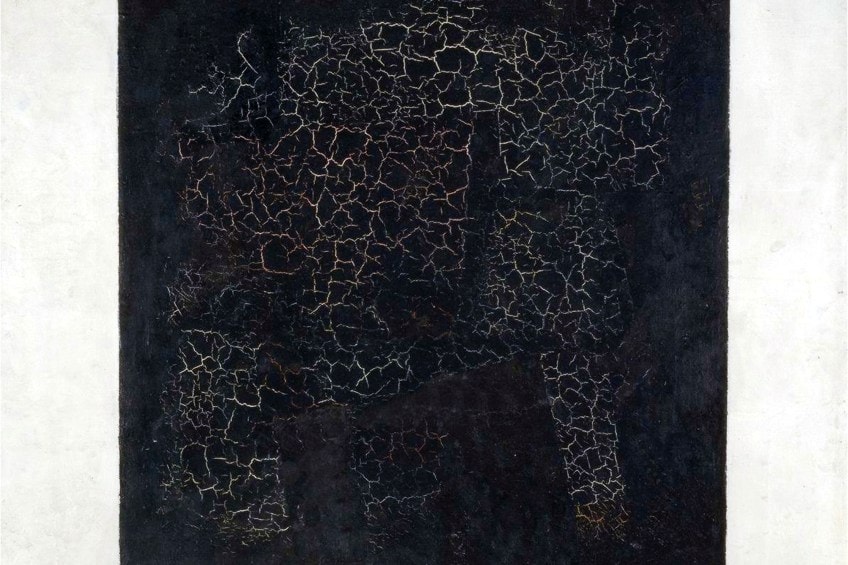
- Die Fahne Hoch! by Frank Stella (1959) Part of Stella's Black Paintings series, this enamel on canvas (308.6 x 185.4 cm) displays symmetrical black stripes forming a cross-like pattern on a raw canvas. Frank Stella, born in 1936 in Massachusetts, emerged in post-war America, rejecting expressionism for object-like art. Influenced by Jasper Johns, it debuted at MoMA's "Sixteen Americans" show. Now at the Whitney, it emphasizes flatness and materiality. Its stark geometry creates optical illusions, highlighting contrast's power in evoking structure amid abstraction.
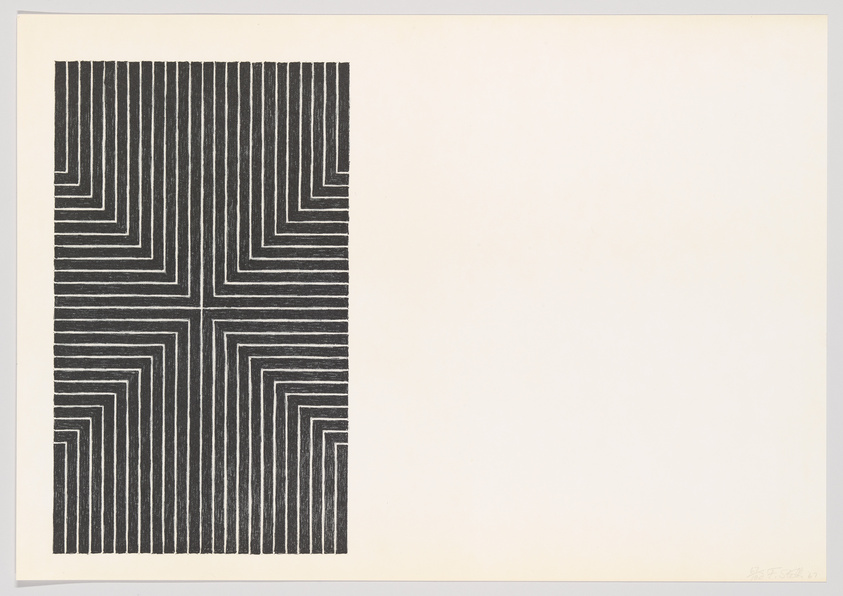
- Untitled (Black on Gray) by Mark Rothko (1970) Acrylic on canvas (203.3 x 175.9 cm), this late work divides the plane into black upper and gray lower halves with a fuzzy border. Mark Rothko, born in 1903 in Latvia, evolved from surrealism to color fields but turned monochromatic in his final years amid depression. Exhibited at the Guggenheim, it reflects mortality. The subtle gradations evoke somber meditation, using absence to convey profound emotion.

- Chief by Franz Kline (1950) Oil on canvas (148.3 x 186.1 cm), featuring bold black strokes on white, suggesting architectural forms. Franz Kline, born in 1910 in Pennsylvania, shifted to abstraction post-1940s, using house brushes for gestural energy. Part of Abstract Expressionism, it's at MoMA. The dynamic lines capture urban vigor, with contrast amplifying raw power and spontaneity.
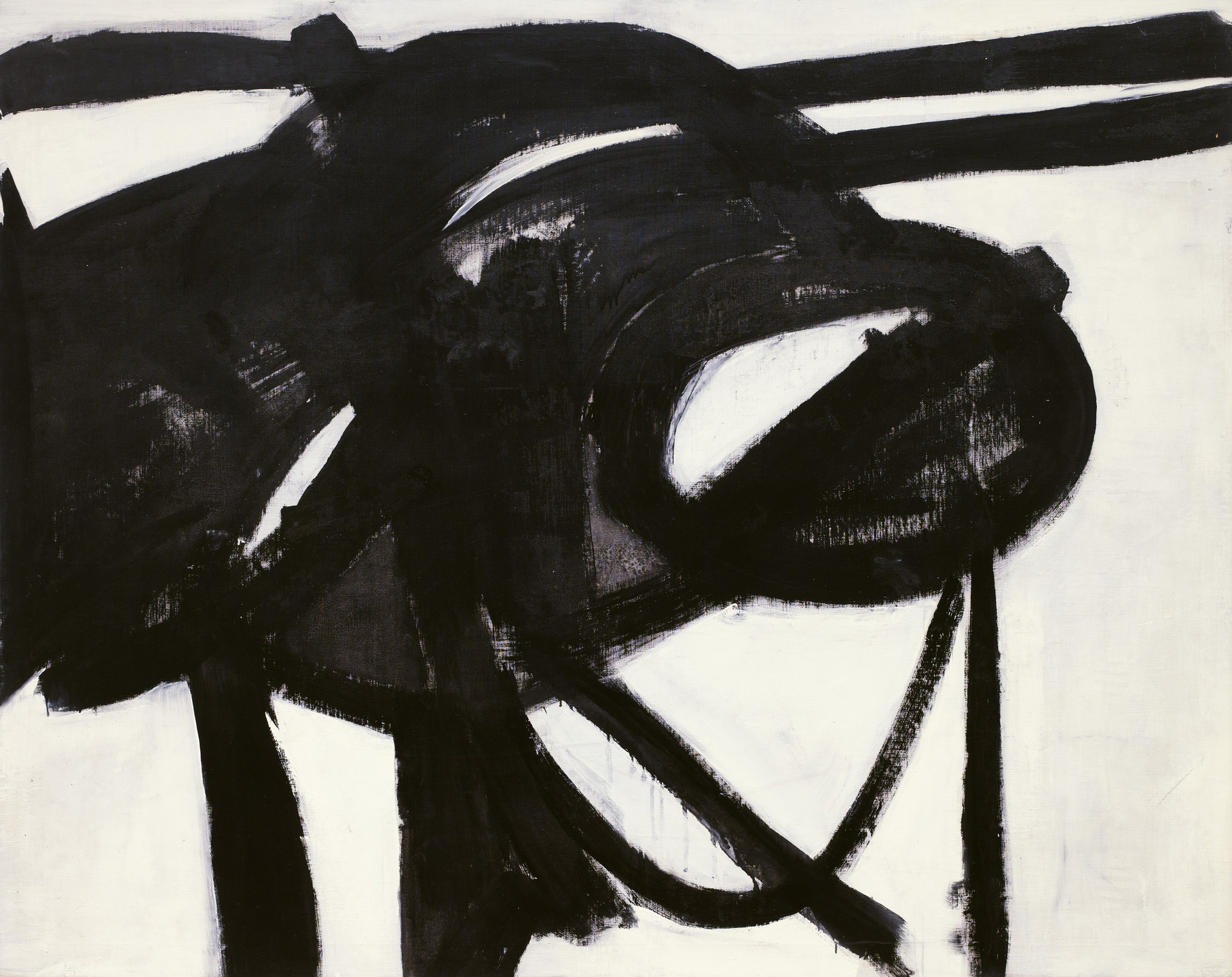
- Elegy to the Spanish Republic No. 110 by Robert Motherwell (1971) Acrylic with graphite on canvas (208.3 x 289.6 cm), bulbous black shapes on beige evoke mourning. Robert Motherwell, born in 1915, drew from surrealism and philosophy. This series honors the Spanish Civil War. At the Guggenheim, its forms symbolize loss, with monochrome enhancing elegiac tone.
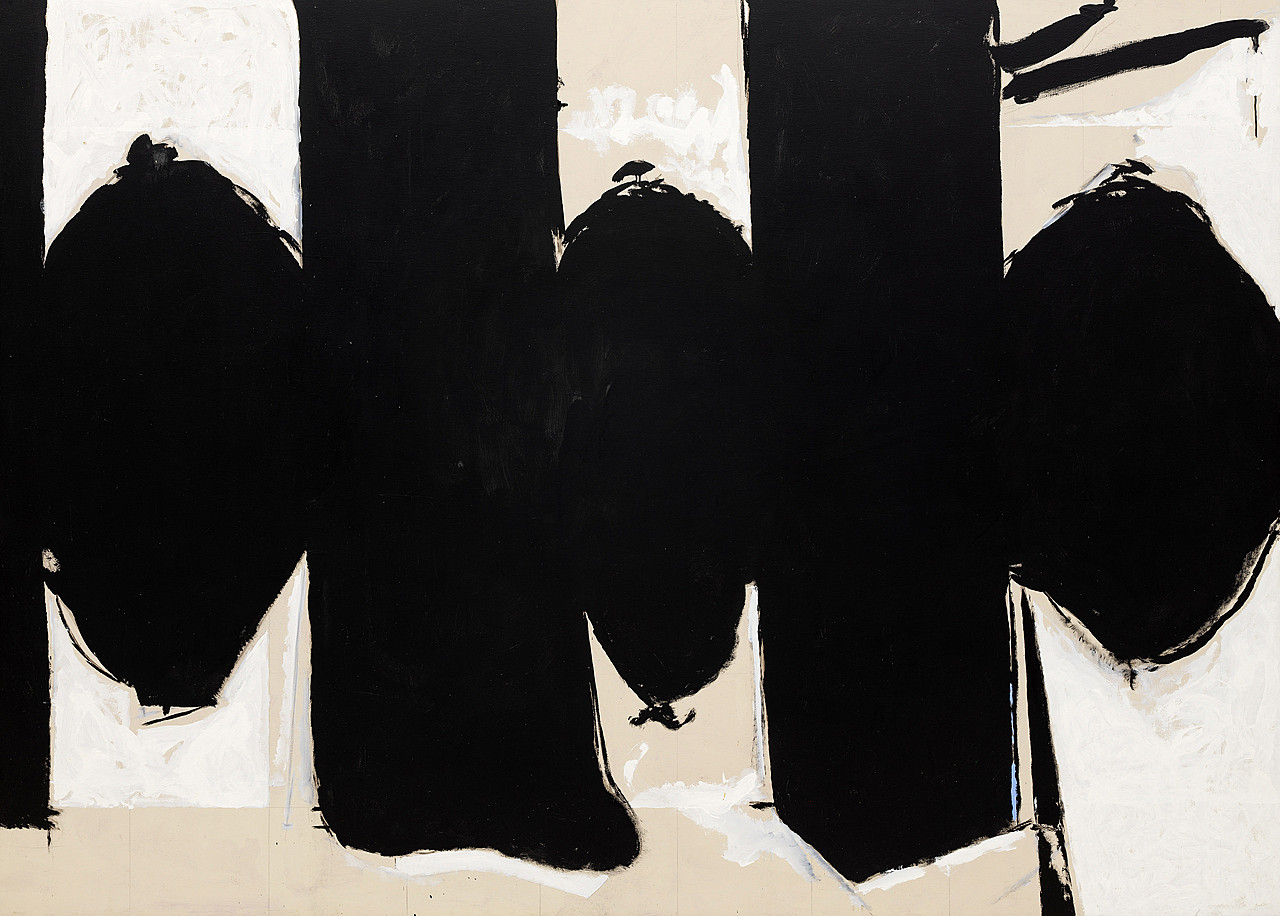
- Untitled by Cy Twombly (1970) House paint and crayon on canvas (340.4 x 401.3 cm), scribbled loops on gray mimic blackboard writing. Cy Twombly, born in 1928 in Virginia, blended graffiti with mythology. From his Blackboard series, it's chaotic yet rhythmic. Held privately, it invites interpretation of mark-making as language.
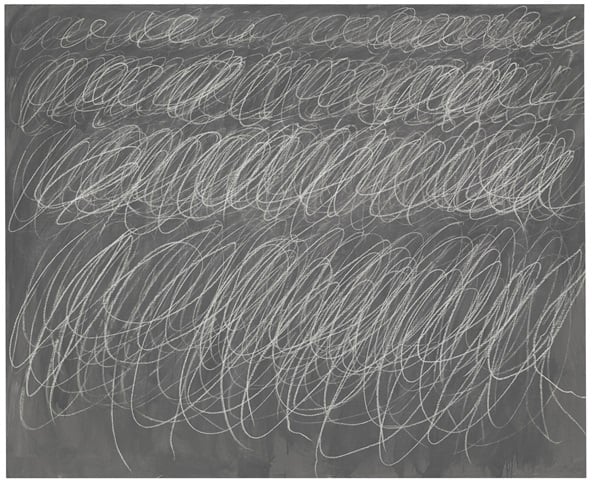
- Grey Fireworks by Helen Frankenthaler (1982) Acrylic on canvas (182.9 x 274.3 cm), diffused grays burst ethereally. Helen Frankenthaler, born in 1928, pioneered soak-stain. Though often colorful, this monochrome explores atmosphere. At her foundation, it evokes transience through subtle tones.
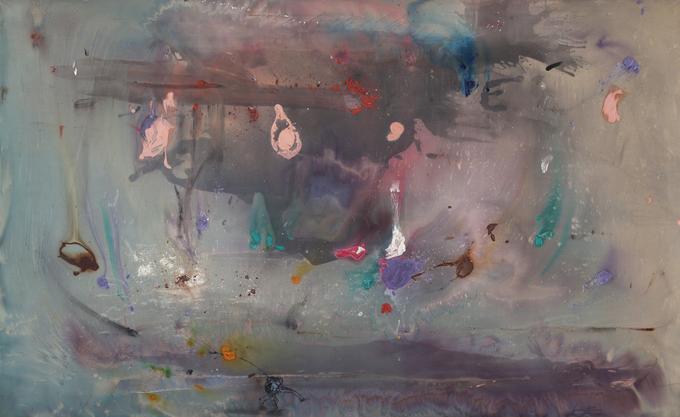
- The Attended by Brice Marden (1996-99) Oil on linen (208.3 x 144.8 cm), calligraphic lines weave over muted ground. Brice Marden, born in 1938, drew from Asian art. Exhibited at Matthew Marks, it meditates on presence via fluid forms.

- Peinture by Pierre Soulages (1953) Oil on canvas (130 x 97 cm), thick black strokes on white play with light. Pierre Soulages, born in 1919 in France, invented "Outrenoir." At WikiArt, its texture reveals luminosity in black.
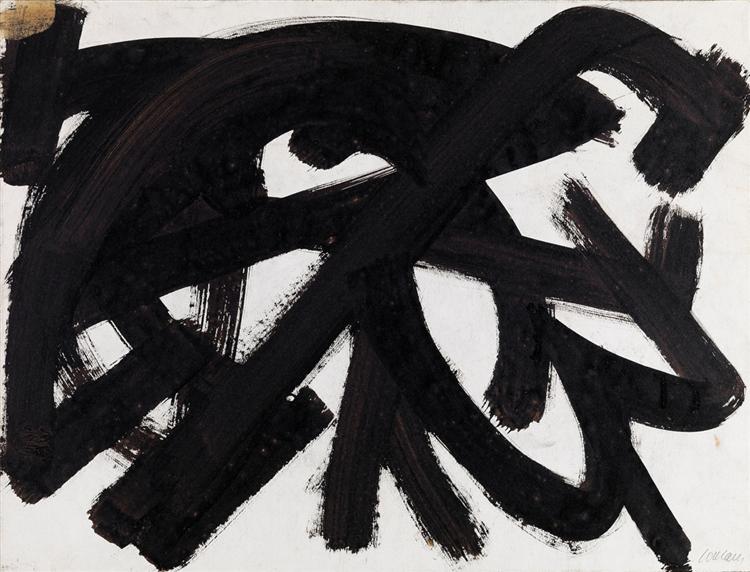
- Untitled by Agnes Martin (1965) Acrylic and graphite on canvas (182.9 x 182.9 cm), faint grids on white. Agnes Martin, born in 1912 in Canada, sought transcendence. In private collections, it evokes calm infinity through subtlety.

Emotional Resonance
Black and white abstract art resonates deeply, conveying emotions through stark simplicity. Without color's warmth, it amplifies raw feelings—joy in light, sorrow in shadow. As per Psychology Today, such works promote mindfulness, their ambiguity fostering personal connections.
Versatility
These paintings adapt to any decor, from modern to eclectic, adding intrigue. Explore collections at Saatchi Art for similar pieces that serve as focal points or subtle accents.
Timeless Appeal
Defying trends, black and white abstraction endures, its elegance rooted in fundamental elements. As digital art rises, these classics remind us of art's core power.
In conclusion, Black And White Abstract Art offers endless inspiration, blending history with contemporary relevance. Discover your own pieces to infuse spaces with timeless drama.
FAQ
What is black and white abstract art? It's a genre focusing on form, line, and contrast without color, emphasizing emotional and philosophical expression.
Why is it timeless? It transcends trends by relying on universal elements like shape and texture, fitting various styles and evoking lasting interpretations.
Key artists in this field? Include Kazimir Malevich, Frank Stella, Mark Rothko, Franz Kline, and Agnes Martin.
How to incorporate it in home decor? Use as focal points in minimalist or eclectic spaces; its neutrality complements any palette.
Where to buy such art? Check online galleries like extralargewallart.com or institutions like MoMA for originals and prints.
